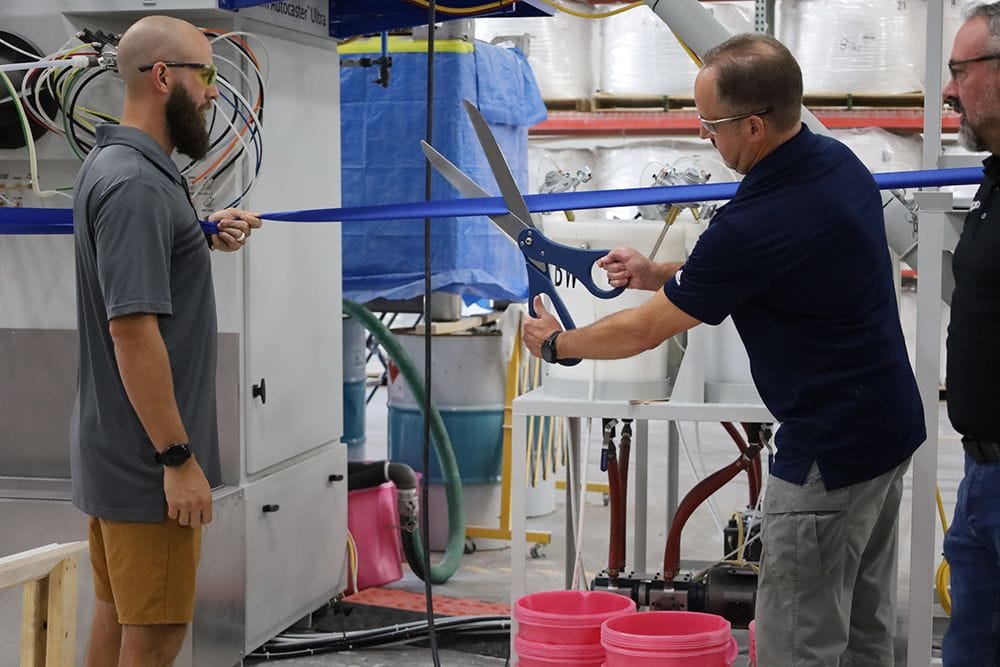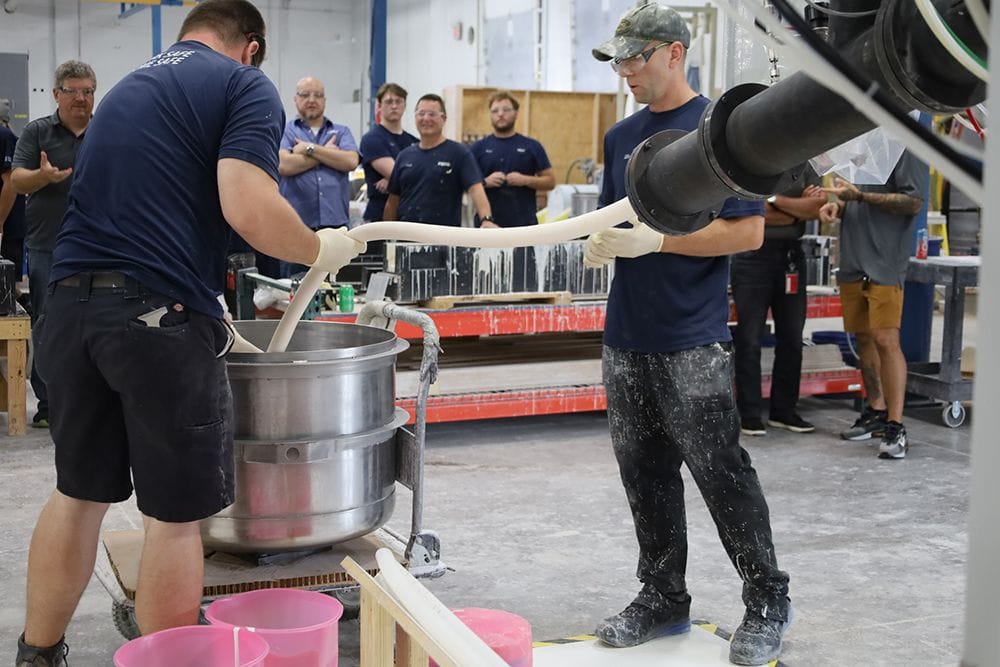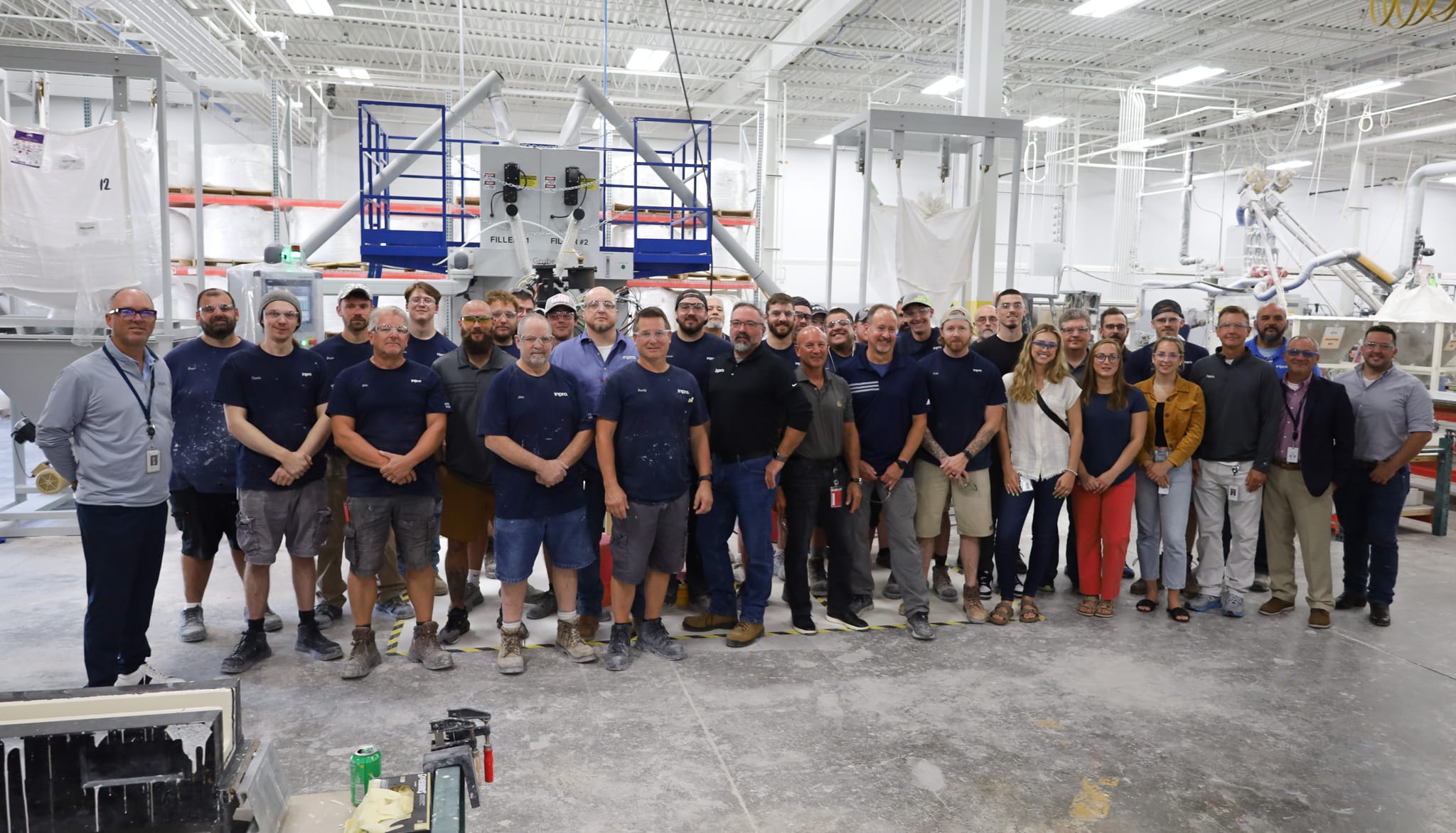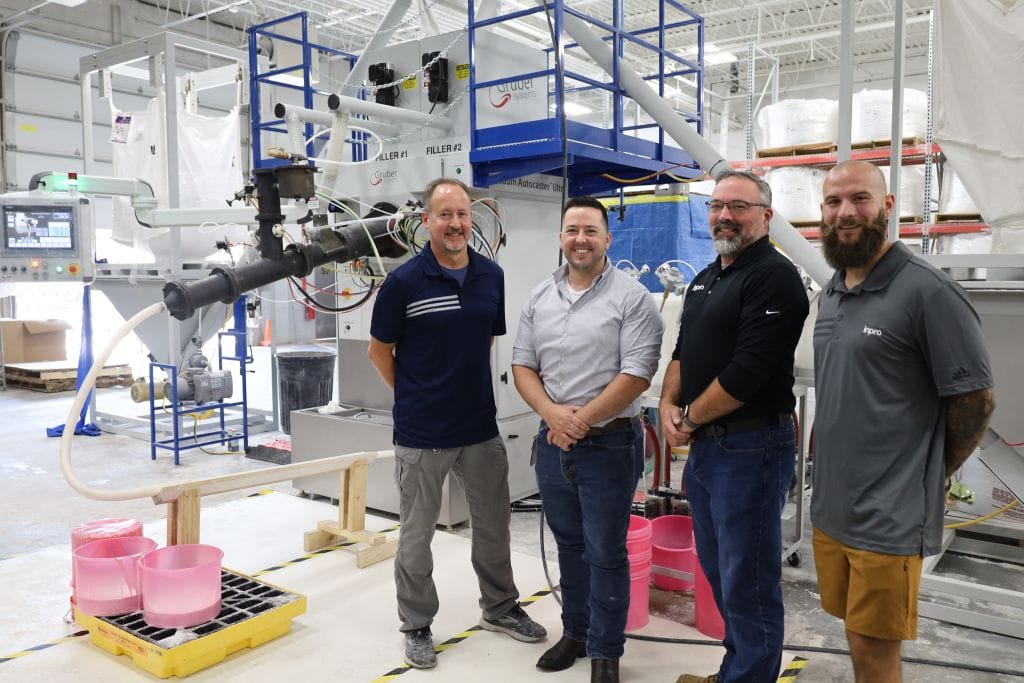Elevating Customer Experience
Revolutionizing Inpro’s Manufacturing with Innovative Processes and Technology

Ayla Starr works at Inpro Corporation.
With a commitment to customer and employee experience, a dedicated team within Inpro’s Commercial Washroom Division embarked on a journey to leverage cutting-edge technology and improved processes starting at the production line.
Inpro’s Commercial Washroom Division manufactures shower bases, walls, partitions, seats and more, serving customers all over the world in Elevating Customer Experience industries like healthcare, education, and even modular construction.
As Matt Budnik, the division’s Senior Sales Director, simply put it: “Inpro is dedicated to investing in ways that help us hit our customers’ deadlines even faster.”
And yesterday’s unveiling of the latest technology on the manufacturing floor, was a great reminder of the remarkable impact this team’s innovation has had on various aspects of the business.


A Collaborative Quest for Improvement
Early last year, the Commercial Washroom Division team embarked on a mission to boost throughput by an impressive 30%. This mission encompassed manufacturing advancement, employee well-being, environmental sustainability, enhanced quality control and amplified capacity.
The team mapped out the manufacturing sector of our washroom’s secondary pour area, unveiling existing issues that begged for innovative solutions. Recognizing the need to rethink the layout and incorporate modern equipment, a team of internal operations and support partners joined forces, employing the minds throughout Inpro’s various departments.
To achieve their vision, the team turned to utilizing Lean Six Sigma and 3P – Production Preparation Process.
Lean Six Sigma is a process improvement approach that combines Lean Management and Six Sigma. The goal is to improve performance by eliminating waste and defects. Lean Six Sigma uses a team-based approach to systematically remove waste and reduce process variation.
3P is an events-based method for simultaneously developing new products, and the standards and workflows to support them, particularly to elevate product design and/or production.
The scope and “hows” of the project evolved over time, but one aspect remained constant: collaboration.

The Driving Force Behind the Transformation
By integrating new technology, the goals of this project aimed to bolster manufacturing capacity and streamline turnaround times. The results did just that.
- The ergonomic design of new cranes ensured both efficiency and employee safety.
- Upgrading to energy-efficient ovens demonstrated the application of Inpro’s commitment to environmental responsibility.
But the integration of technology wasn’t merely about efficiency—it was also about quality assurance. The newly adopted processes allowed for meticulous control at every stage, from mixing to pouring and curing. This commitment to precision directly translated to a higher standard of product quality.
Dave Hendrickson, Plant Manager of the Commercial Washroom Division, remarked: “Utilizing the 3P methodology our team came up with a plan to not only meet our current goal of a 30% throughput improvement; but at the minimum allow us to double that throughput. With the input of frontline employees and the support of senior management, we are utilizing automation to allow us to decrease lead times, increase quality, and improve the safety of our partners on the operations floor.”
- These advancements significantly increased the division’s capacity to serve its clients, effectively doubling Inpro’s ability to meet our commercial washroom deadlines.
- Shipping logistics underwent a strategic repositioning, optimizing for present and future shipping volumes.
- Racking systems were strategically installed for efficient storage of raw materials, packaging, and finished products.
- Post-cure ovens helped decrease noise, improve energy efficiency, and enhance productivity.
- Bridge cranes now spanned a larger area, accommodating simultaneous production of varied base sizes and styles.
And Monday’s ribbon-cutting ceremony of the new Autocaster machine was a reminder of the progress that’s been made over this last year. The Autocaster removes the laborious task of manually gathering, weighing, and mixing raw materials with technology that allows the machine to perform those tasks according to a strict recipe, controlled by an operator.
The new Autocaster took a process that once consumed 75-90 minutes, streamlining it to a mere 10 minutes.
“Since we began this project a year ago, the scope has changed and changed again somewhat,” says Zach Frankowski, Continuous Improvement Manager. “The group at every step has worked together and collaborated each time to ensure they had buy-in from each other. I am so excited for this team and the journey of improvement they are on. This has been an awesome project and we are already working on the next area of opportunity for our Commercial Washrooms division.”

This team’s dedication to elevating customer experience through technology and innovative processes is a testament to Inpro’s commitment to customer delight. By enhancing manufacturing efficiency, product quality, and overall capacity, the Commercial Washrooms Division has not only met the needs of the facilities and the building professionals that serve them, but has set a new standard for customer-centric manufacturing in the industry.
More from Modular Advantage
Resia: Breaking All the Rules
Resia Manufacturing, a division of U.S.-based Resia, is now offering prefabricated bathroom and kitchen components to industry partners. Its hybrid fabrication facility produces more precise bathroom and kitchen components (modules) faster and at lower cost than traditional construction. Here’s how Resia Manufacturing does it.
How LINQ Modular Innovates to Bring Modular To The Market in the UAE and Beyond
LINQ Modular, with an office and three manufacturing facilities in Dubai, is a modular firm based in United Arab Emirates. The company is on a mission: to break open the housing and construction markets in the Gulf Cooperation Council (GCC) area with modular.
ModMax: Redefining Modular Construction with Confidence and Precision
ModMax was born out of frustration—frustration with five persistent pain points in modular construction: Permitting bottlenecks. Production delays. Rigid designs. Disconnect between “the office” and the field. Lack of transparency and communication.
LifeArk: Disaster-Resilient Housing from Recycled Plastic and 100-year-old Technology
Wee compares LifeArk’s housing units to Yeti coolers, as they are built similarly. Each component takes 15 to 20 minutes to manufacture, has an R-value of 40, and includes molded slots and chases for wiring, plumbing, fire sprinklers, and other utilities.
Building the Future of Modular Edge Infrastructure
The edge data center market is expanding rapidly, driven by the surge in AI workloads, IoT adoption, and the need for localized compute power. In these environments, sustainability, scalability, and reliability are non-negotiable. Cooling is among the most complex challenges for operators—and one of the most decisive factors in long-term success.
Accelerating Light-Gauge Steel Construction: A Semi-Automated Digital Workflow for Off-Site Projects
For construction professionals, the message is clear. By adopting semi-automation and digitalization, companies can deliver projects faster, more accurately, and more profitably, while also building stronger collaboration across teams. The approach is not about replacing people with machines, but about empowering people with better tools and processes.
Why Modular Data Centers Are Gaining Momentum
Artificial intelligence, high-performance computing, and edge applications push the limits of traditional “stick-built” data centers. They take years build, often struggle with high density workloads, and aren’t optimized for deployments near end users. Modular data center platforms are purpose-built to address these challenges, offering flexibility and scalability to adapt to evolving technologies, while opening new opportunities for the modular construction industry.
Supply Chain Innovation in Action: 5 Habits Every Modular Leader Should Practice
By applying these principles to supply chain practices — collaborative planning, strategic procurement, scenario modeling, digital tools, and transparent forecasting — construction leaders can build value chains that are not just efficient and agile, but truly innovative.
Exploring the Role of Modular Integrated Construction (MiC) in Advancing Circular City Principles – A Survey of Stakeholder Perspectives
The survey findings highlight the significant potential of Modular integrated Construction (MiC) in advancing the development of circular cities. By reducing costs, accelerating construction timelines, and minimizing waste generation, MiC offers a promising approach to sustainable urban development.
The Use of MS POLYMER™-Based Sealants and Adhesives in Modular Building
These products combine flexibility and elastic recovery with excellent adhesion to different substrates and have already shown their usefulness in traditional construction. Now it’s time for them to be put to use in the modular construction industry.










